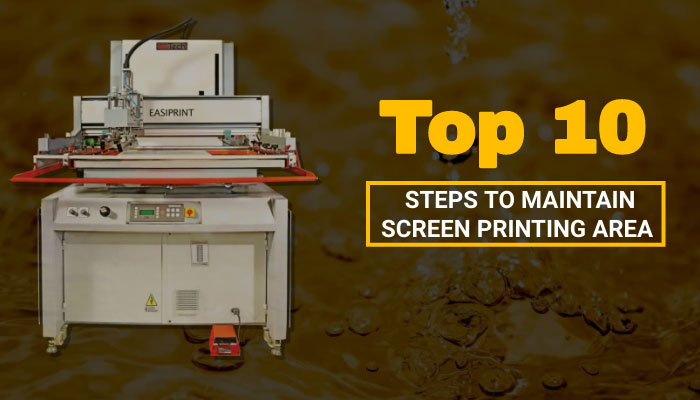Get the best out of you ”

Maintaining the clean and appropriate environment is probably one of the most ignored step in screen printing process. Isn’t it? However, it is a known fact that dust contaminates screen-printing jobs, affecting their appearance, and in the case of electronic parts, their performance also.
In screen printing industry, substrates have always been the source of big problems. Companies can realize lower rejection rates, higher production speeds, and higher profits if substrate problems are reduced or eliminated. Sometimes, the problems are related to the manufacturer or conversion of the material and are not within the screen printer's control. Very often, however, substrates become contaminated before or after they enter your plant.
The physical environment of your screen making department should be an enclosed area where the entire enclosure should be temperature and humidity controlled, have sealed floors, walls, and furniture, have separation of wet anddry functions, be safe lighted from coating through image development and have adequate ventilation. Maintain a temperature of 22-25°C in the general rooms must have circulating, filtered airflow. Maintain humidity in all dry-function areas at 50% RH or less. All surfaces should be smooth and washable, with no tendency to shed.
Here are the quick 10 steps to protect substrates from the environment and maintain good housekeeping:
1. Whenever possible, keep doors and windows shut. During hot, dry weather ensure doors and windows on opposite sides of the factory are left open, creating cross ventilation and a free way for dust to travel.
2. Move corrugated boxes and all other fibrous material away from the printing area. They are classic sources of dust and even the most quality conscious printers can forget how much dust they generate. It is not unheard of for a medical device manufacturer with a clean room to have wooden skids of corrugated boxed material near printing presses. If you are a roll-to-roll printer, keep cores away from the printing areas until necessary, and clean them before they get near your material.
3. Wear non-fibrous clothing. In most car paint plants, everyone is required to wear a jumpsuit and booties. It is a full-body suit that keeps dust from clothing from contaminating the work area.
4. Consider dust problems when you plan your shop layout. Try to keep shipping and receiving far away from your printing area. Also keep traffic, which kicks up dust, away from your printing area.
5. Try not to have heating and cooling vents and air returns above your presses.
6. Look up. Is your ceiling in good shape? Is it cracking and peeling? Do you have an open ceiling with exposed joists? You might be surprised at how much dust can result from a bador non-existent ceiling.
7. Clean from the top down. Dust doesn't accumulate from eye level downward. Dust starts on the ceiling and works its way downward. The tops of light fixtures, walls, shelving units and everything else outside your field of vision collects dust. Starting with the ceiling, dust everything, and allow itto settle before sweeping the floor, and use a sweeping compound to avoid recirculating the dust. For lower-volume runs, a handheld tacky roller may be sufficient to remove dust from substrates.
8. Keep humidity levels as high as possible or at fixed levels. Humidity dissipates static because the microscopic water droplets act as ionizing agents.
9. Talk to your suppliers, manufacturers and converters of substrate materials. It is important that printers and suppliers are conscious of each other’s needs. If your film converter, for example, is introducing static into a product during sheeting or slitting, you and the supplier need to pin point the source and solution to the problem.
10. Adopt a "clean room" type standard. Restricted door entry, Air shower entry cabin & Sticky material lines the floors of key door ways to remove contamination from the body, clothes & undersides of your shoes.
There are many other ways to reduce dust and static that will enable you to run jobs with less interruption and reduced scrap rates. Some of these falls into the "general housekeeping" category, but they deserve repeated attention.